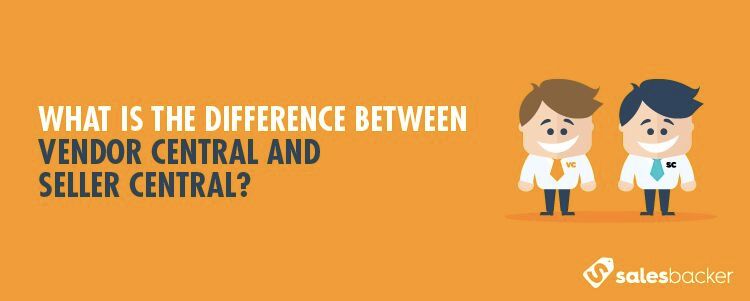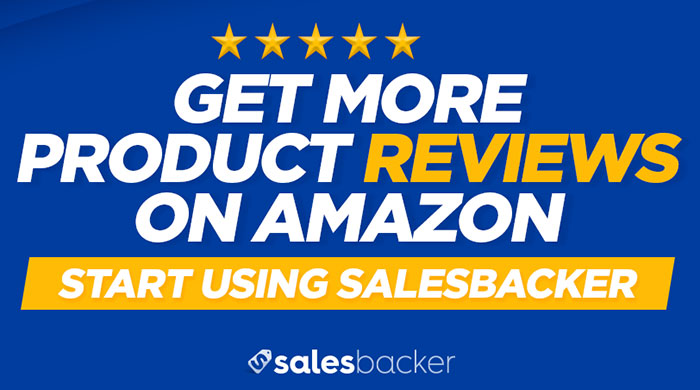
Choosing between Seller Central and Vendor Central is one of those pivotal decisions that can change the trajectory of a business with Amazon for the better or for the worse. If you’ve received an invitation from Amazon to migrate to Vendor Central, you might be attracted to this option simply because of the exclusivity of the invite-only platform. But before you pull the trigger, you need to do your homework to carefully consider what this change would mean for your business. Just because Vendor Central is only available to top sellers does not mean that all top sellers use Vendor Central. There are pros and cons to both platforms, and it is important to carefully analyze each option to figure out what the best choice is for you.
1st Party vs. 3rd Party Business Model
Seller Central and Vendor Central are not just different platforms, they are two different business models. When you use Seller Central you act as an independent, third party seller on Amazon. You sell your products directly to Amazon customers and manage inventory, pricing, and much of the customer service. With Vendor Central, you act as a first party seller or distributor. Under this model you sell your products at a wholesale price to Amazon, and Amazon then sells your products to their customers, handling all inventory management, pricing, and customer service. While this more “hands off” approach can be enticing, it is important to consider what you are sacrificing under this model and carefully weigh the pros and cons of each choice before you decide whether or not to make the switch.
Seller Central: the Pros
Just because Seller Central is accessible to everyone, doesn’t mean it is lacking in perks. In fact, the platform is extremely attractive for many companies, and can in some cases be preferential to using Vendor Central. Here are some of the benefits that Seller Central offers:
Pricing Control
You set the customer price. This means you have the ability to raise or lower prices to closely and carefully manage your margins while remaining competitive.
Inventory Management Control
With Seller Central you are fully responsible for inventory management. While this does require a bit of work, it also means that you can lessen the risk of going out of stock by carefully forecasting demand and replenishing your inventory as needed.
Sales and Performance Data
Seller Central includes robust reporting analytics, allowing you to analyze sales performance as well as effectively forecast demand to better manage inventory.
Quick Payments
With Seller Central you get paid on a reliable and steady schedule of once every two weeks.
Seller Support
If you run into an issue or problem with your account, you don’t have to fly blind — you can open a case in Contact Us to get the assistance of Seller Support.
Fulfillment By Amazon (FBA)
For a fee, Amazon will pick, pack, and ship your products for you as well as manage customer service and returns.
Enhanced Brand Content (EBC)
If you’ve registered your brand in the Amazon Brand Registry, you can access Enhanced Brand Content to create EBC product descriptions and control detail page content for your branded products.
Paid Search Advertising
With Seller Central you have access to Sponsored Product Ads and Headline Search Ads to drive traffic to your products.
International Sales
Seller Central allows you to expand into foreign markets to further grow your sales.
Integration with Salesbacker
When you use Seller Central, you can easily grow the number of customer reviews for your product by signing up for Salesbacker. Salesbacker allows you to automatically email a customer when they purchase a product from you to politely request feedback in the form of a customer review. If you aren’t yet using Salesbacker, be sure to sign up for a free 30-day trial to start growing the number of customer reviews for your products today.
Seller Central: the Cons
While Seller Central does have many perks, there are some cons to be aware of as well, including:
Product Discoverability
Your products could be difficult for customers to find unless you actively use content marketing or paid ads.
FBA Long-Term Storage Fees
Since inventory management is fully in your hands, if you miscalculate inventory demands and overstock Amazon’s warehouses you may be stuck with costly long-term storage fees.
Vendor Central: the Pros
Amazon only offers top sellers access to Vendor Central, so it is not surprising that this privilege comes with some enticing perks. Here are some of the benefits that come with Vendor Central:
“Sold and Fulfilled by Amazon” Messaging
If you move to the Vendor Central model, your products will be listed as “sold and fulfilled by Amazon.” Many customers are drawn to this stamp of approval from Amazon, and the legitimacy of the Amazon label can definitely grow your sales.
Exclusive Marketing Services
As a key part of the Vendor Central platform you gain access to exclusive marketing services, including:
Amazon Marketing Services (AMS)
AMS helps shoppers to discover your products via pay-per-click ads that you run on the Amazon site.
Amazon Vine
Amazon Vine is a program that allows you to send products to top reviewers to gather customer reviews in advance of product release dates.
Amazon Prime Pantry and Subscribe and Save
Only products sold under Vendor Central can qualify for these programs.
A+ Detail Pages
These enhanced detail pages can result in more traffic and conversions, by educating customers about your products, offering more information about your brand, and improving SEO results. Includes features such as high quality images, videos, and comparison charts.
Vendor Central: the Cons
Along with the perks of Vendor Central, there are some downsides to carefully consider, including:
No Pricing Control
With Vendor Central, Amazon controls the sale price. Amazon does not always honor the MRSP, and your products may sell at a lower price than you’d like or expect.
Fees, Fees, and More Fees
There are plenty of areas where you can see unexpected or additional fees that can quickly eat into your margins, including:
Chargebacks
If Amazon says you didn’t package your product correctly, they will “fix” the problem and charge you — without asking you about it first, and even in cases where it isn’t actually necessary. The process of contesting incorrectly applied fixes and the corresponding fees can be a huge headache.
Co-op Fees
With Vendor Central you can expect to see some hefty co-op fees, including a Marketing Development Fund (MDF) of 3-15%, freight allowance of 2-3%, and damage allowance of 1-2%.
Paid Analytics
Vendor Central offers sales and demand forecasting data that is similar to what Seller Central offers, with one key difference — you have to pay to access it.
Lack of Vendor Support
Vendor Central does not have the type of Seller Support that Seller Central offers. Unless your brand is a household name, you are unlikely to get any real support in working through issues, questions, or problems.
No Inventory Management Control
Amazon has been known to cut it close on inventory forecasting; don’t be surprised if Amazon runs out of stock on your items, sometimes even without a warning that inventory is running low.
Irregular and Infrequent Payment Timing
Vendor Central payment timing is neither reliable nor frequent. In the event you are paid at net 30, Amazon takes a 2% discount. Otherwise, you are looking at net 60 or even net 90 payments. This kind of irregular payment timing can easily cause cash flow issues for some businesses.
Negotiated Terms, with Ever-Shrinking Margins
Under the Vendor Central model you should expect to see some pretty aggressive standard terms from Amazon; and be prepared for some lengthy and difficult negotiations if you need to adjust those terms in any way. As your business grows, Amazon will typically continue to seek out terms that further benefit them, eating into your margins.
No International Sales
Vendor Central is only available for U.S. sales.
Does Not Integrate With Salesbacker
Salesbacker offers an easy way to grow the number of customer reviews for your listings via to an automated email that is sent whenever a customer purchases your product. The Vendor Central platform does not integrate with Salesbacker, and as such you cannot benefit from this helpful tool.
Making the Choice
There are a lot of factors to consider when making the choice between Vendor Central and Seller Central. Be sure to consider the long-term goals of your business as a guiding force in the decision making process. Only you can decide which platform will best support your business goals, but by weighing the pros and cons of each you can make a confident and informed choice.




